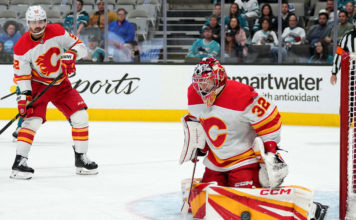The people of greater San Diego, his people, will join thousands of others Friday night to say goodbye to Junior Seau. They will file into Qualcomm Stadium, his house, to tell stories and shed tears and try to wrap their minds around a single question.
Why?
Why would this beloved and widely admired former athlete, who made millions during an extraordinary 20-year NFL career, decide to end his life?
Why would Seau, 43 years old, turn away from his family, his four children, to enter a spare bedroom of his oceanfront home, point a pistol at his chest and pull the trigger?
Seau’s family is asking. His fans are asking. His friends are asking.
And because Seau was one of the most popular figures in NFL history _ his jersey was a big seller, especially in Southern California _ the world’s biggest sports machine not only must ask but also be compelled to act.
More and more credible evaluations are taking football into profoundly uncomfortable territory, revealing the game we love often takes a terrible toll on its performers. They sometimes choose to die rather than endure more agony.
If the bounty scandal involving the New Orleans Saints rudely pulled the covers off football’s dirtiest secrets, then Seau’s suicide has walloped the game with enough force to shake the walls of the sport.
Seau’s death is the third apparent suicide by a retired NFL player in 15 months. None of us knows for certain the despair that drove Seau to take such extreme action, but we would be naive, or foolish, to dismiss a connection with football. We would be negligent if we did not consider that he was somehow damaged after 25 years of violent collisions, or that he struggled to cope without the game that consumed him.
The league is being clobbered with staggering amounts of evidence regarding concussions and their long-term affects. Hundreds of retired players contend with financial problems, mood swings, depression and memory loss. Some of these woes have been attributed to Chronic Traumatic Encephalopathy (CTE).
“I’m no scientist, but I don’t have to be,” ESPN analyst Lomas Brown, a seven-time Pro Bowl offensive lineman who spent 18 seasons in the NFL, tells the St. Louis Post-Dispatch. “Something’s not right here. This can’t be some random coincidence.”
Well, no. That’s why retired players are lining up to get their piece of the NFL. The league is facing lawsuits involving about 1,800 players (and some spouses and widows), bringing at least 70 complaints, charging the league misled players about the dangers of concussions. And those numbers are constantly changing because the list is constantly growing.
The NFL is not exactly on the brink of demise, but it is being forced to seek solutions to what could be a very costly problem.
What happens when a multibillion-dollar business that spent years denying the problem suddenly finds itself facing thousands of plaintiffs out to make them pay? It scrambles to become more assertive on issues related to player health and safety.
But the problems are so comprehensive they will require years of study and millions upon millions spent to improve not only player safety but the post-career experience.
“When you’re a football player, all of your time is accounted for. Everything is planned for you,” says Tim Harper, a San Jose career counselor who has consulted for several professional sports teams. “All of sudden, you’re going from this real tight, regimented schedule to nothing.”
“And then you lose all the prestige, the status. All that’s gone, too.”
For it’s not just the physical toll on the body and mind. It’s also the difficulty adjusting to life after football. Transitioning out of football can be an immense undertaking – often the most difficult a former player can face.
“Every Sunday is a crescendo,” explains former 49ers running back Delvin Williams. “You live for that crescendo for your entire career. There’s nothing like it. But you can’t keep it up. When it’s gone, it’s gone. And moving on is harder than people realize.”
Williams, a two-time Pro Bowl selection who retired in 1982, says he spent 17 years seeing a therapist. Trying to kick his lifestyle addiction cold turkey, he is one of the few ex-players able to swallow pride, drop his shield of machismo and get professional help.
Don’t misunderstand, though. His body also suffered. Williams says he is scheduled this week to undergo shoulder surgery – his 17th operation.
That’s not unusual. Walking through a football locker room after a game is in some ways like visiting a hospital ward. There is the powerful odor of ointment. The floor is littered with bloody bandages. Trainers scurry about. Men wince and limp and moan and sigh.
That’s the life of the player. They are paid well. They sign up for it. Many love it.
Seau surely did. Though off the field he was an island spirit with a quick smile and a good word for everybody, Junior the linebacker was known for maniacal dedication, unsurpassed intensity and an absurd degree of toughness. He was the guy arriving in pre-dawn darkness, staying until after dusk and playing through countless injuries.
Now that he’s gone, we wonder.
Did he put himself through it for us? For himself? For his teammates?
Many who have played, or are playing, in the NFL are asking those questions. They’re asking it of Seau’s soul. And, more than ever before, they are asking it of themselves and the indomitable league they helped create.












